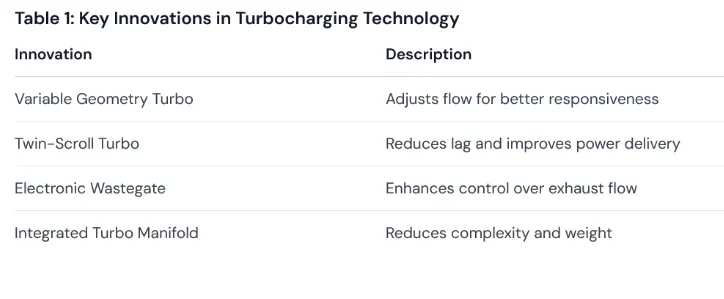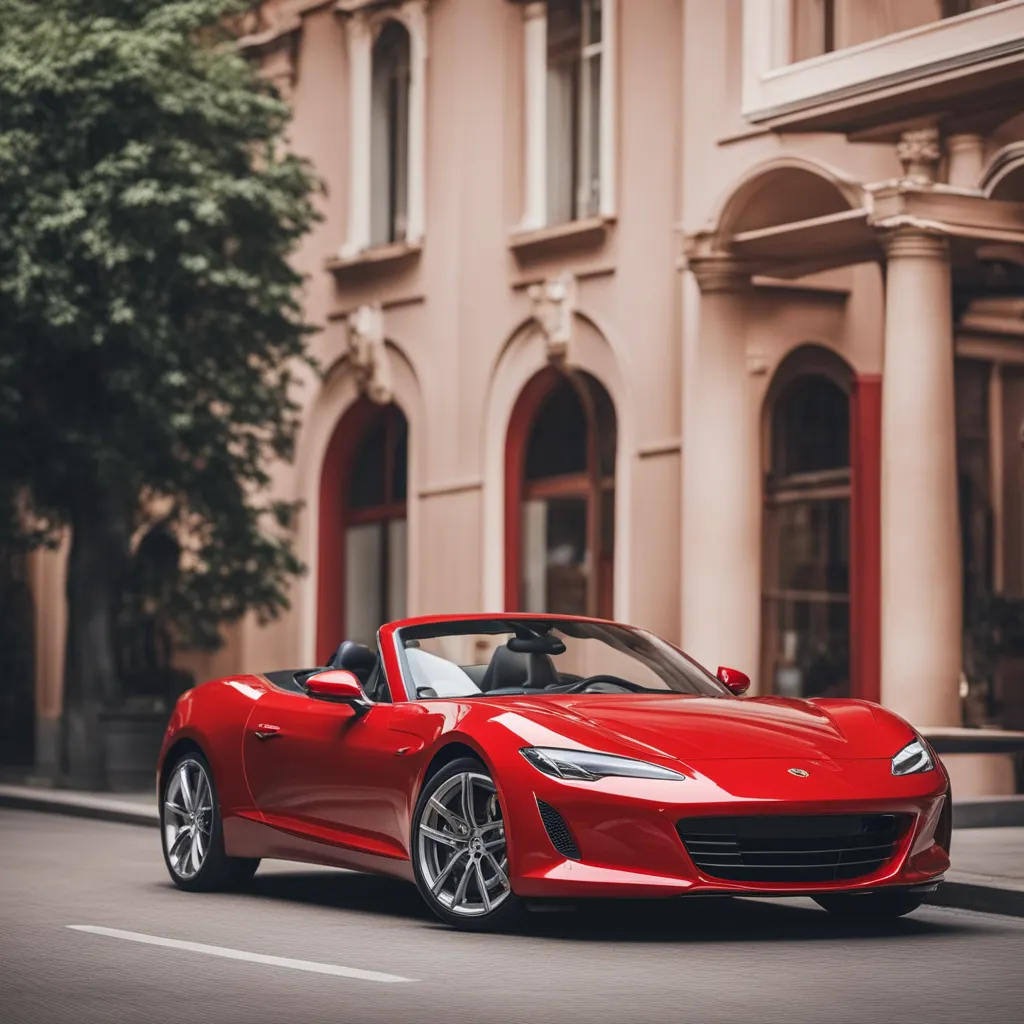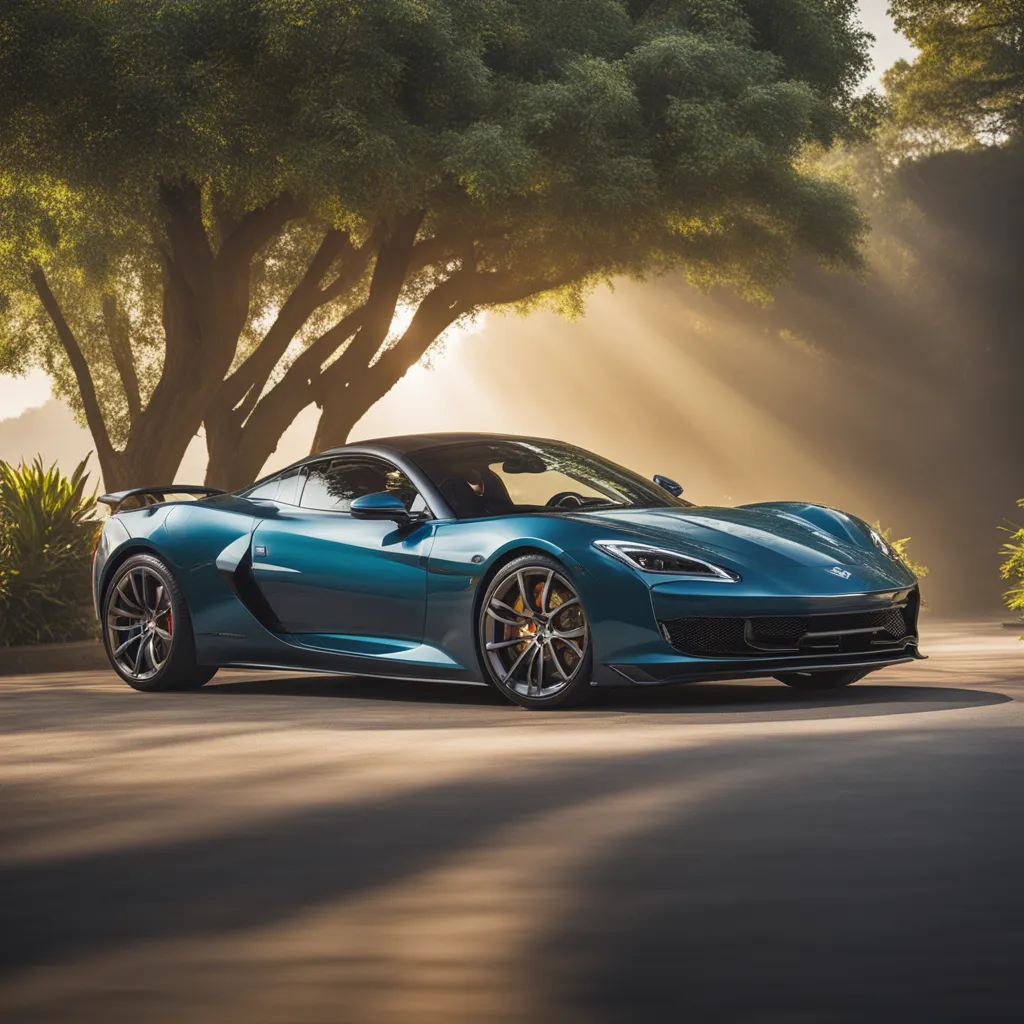The Adrenaline-Fueled Symphony: Unleashing the Power of Turbo-Charged Sports Cars
What defines the adrenaline rush of driving a turbo-charged sports car?
This question is not only provocative but also essential in understanding the intricate relationship between man and machine that turbocharged vehicles establish. Beneath the surface of speed, precision, and performance lies a symphony of engineering, technology, and innovation.
This discourse aims to unravel the complexities involved in turbocharging, revealing how these sophisticated engines not only elevate performance standards but also enhance the visceral experience of driving.

Understanding the Turbocharged Engine
The Fundamentals of Turbocharging
Turbocharging is a method that enhances an engine’s efficiency and power output. A turbocharger is essentially an air pump, designed to improve the engine's performance by forcing in more air than naturally aspirated engines can provide.
This process enables more fuel to be burned, significantly increasing power without a substantial increase in engine size.
In essence, turbocharging involves a turbine and a compressor. The exhaust gases produced during combustion spin the turbine, which is connected to a compressor via a shaft. As the turbine spins, it compresses the air entering the engine, allowing it to mix with fuel for a more vigorous explosion — thus generating more power.
The Advantages of Turbocharged Engines
Driving enthusiasts often consider turbocharged engines superior to their naturally aspirated counterparts, and there are several reasons for this:
- Increased Power Output: Turbocharged engines can produce significantly more power without increasing displacement.
- Better Fuel Efficiency: By making better use of exhaust gases, turbochargers can help improve fuel efficiency.
- Reduced Emissions: Efficient fuel combustion results in fewer harmful emissions, aligning with modern environmental standards.
The confluence of these advantages makes turbocharging a formidable technology in the automotive realm, especially as brands increasingly target efficiency and performance simultaneously.
The Evolution of Turbocharging Technology
Historical Context
Turbocharging technology has an intriguing history. It found its initial application in the aviation industry in the early 20th century, where it played a crucial role in enhancing altitude performance. The real translation of this technology to automotive applications began in the late 1960s when manufacturers sought to boost engine power without increasing size and weight.
Technological Innovations
In the modern context, technological advancements have rendered turbocharging more effective and reliable. Such innovations include variable geometry turbines, which adjust the flow of exhaust gases based on engine speed, providing smoother and more responsive acceleration. Additionally, twin-scroll turbos have emerged, allowing for quicker spool-up times and reduced lag, creating an exhilarating driving experience.
These technological advancements have fundamentally altered the driving experience. The dynamics of acceleration, cornering, and overall vehicle performance have reached unprecedented levels. What were once considered limits are now merely starting points for innovation.

Iconic Turbocharged Sports Cars
Porsche 911 Turbo S
The Porsche 911 Turbo S exemplifies the quintessence of turbocharged sports cars. With its iconic design and staggering performance metrics — 0 to 60 mph in just 2.6 seconds — it is as much about the thrill of driving as it is about the engineering prowess that enables such speed.
The Turbo S maintains the traditional aesthetics of the 911 while seamlessly integrating modern technology. Its 3.8-liter twin-turbocharged flat-six engine delivers an astonishing 640 horsepower, showcasing not just speed but also precision handling. Porsche’s commitment to blending performance with luxury results in an unmatched driving experience.
Ferrari 488 GTB
Shifting focus to Italy, the Ferrari 488 GTB demonstrates the application of turbocharging in a supercar setting. This car boasts a 3.9-liter twin-turbo V8 that produces 661 horsepower. The aesthetic appeal of the 488 GTB goes beyond mere appearance — it embodies the racing heritage of Ferrari while integrating advanced aerodynamics and lightweight materials.
The vehicle’s responsiveness is partly attributed to its turbocharged engine, which gives it a ferocious nature without sacrificing smoothness or control. The interplay between design and engineering in the Ferrari 488 GTB exemplifies how turbocharging can heighten performance while also maintaining the brand’s storied emphasis on aesthetic excellence.
Ford Mustang EcoBoost
While often associated with raw power, the Ford Mustang is increasingly embracing the turbocharged paradigm. The EcoBoost variant delivers substantial horsepower with a 2.3-liter turbocharged four-cylinder engine while retaining the classic Mustang experience.
The Mustang EcoBoost signifies a shift in consumer preference, highlighting the growing interest in power that also aligns with efficiency. This model marries performance with practicality, appealing to a new generation of enthusiasts eager for lower emissions and better fuel economy without relinquishing performance.
The acceleration offered by turbocharged sports cars is often compared to the raw intensity of a roller coaster ride. The moment you tap the accelerator, the turbo's assistance becomes evident; the engine's response is immediate and invigorating. It is this rush, this visceral feedback instantaneously transmitting through the car's chassis, that defines the experience.
Handling and Control
Beyond mere acceleration, handling plays a pivotal role in the exhilarating aspect of driving. Turbocharged vehicles typically employ sophisticated suspension systems that work in tandem with the engine’s output to maintain control during high-speed maneuvers.
The combination of adjustable dampers, adaptive aerodynamics, and electronic aids come together to craft an experience that fosters a profound sense of partnership between driver and machine. The relationship symphonically oscillates between intuitive responses and mechanical precision, creating an incredibly rewarding driving experience.
The Soundtrack of Performance
An often overlooked aspect of turbocharged sports cars is the sound they produce. The roar and growl of the exhaust, amplified by the turbo system, add an auditory dimension to the driving experience. Many manufacturers have invested in engineering exhaust systems that not only enhance performance but also deliver an engaging acoustic experience.
The emotional connection established through sound is profound — it resonates deep within the enthusiast, amplifying the performance's visceral nature. Whether it is the iconic whistle of a turbo spooling up or the grumble of the exhaust note, these auditory cues encompass part of the thrill turbocharged vehicles provide.

Challenges and Concerns
Turbo Lag and Performance Tunings
Despite the numerous advantages, turbocharged engines can exhibit a phenomenon known as turbo lag. This lag occurs due to the time needed for the turbocharger to spool up and generate boost. Engineers have developed various solutions, such as larger turbo sizes and better materials, to mitigate this issue through enhanced performance tuning.
Maintenance Considerations
Maintenance of a turbocharged vehicle often requires additional considerations. Turbo engines generally operate at higher temperatures and pressures, leading to the potential for increased wear and tear. Regular oil changes, the use of high-quality fuels, and adherence to manufacturer specifications are critical to maintaining engine longevity and performance.
Environmental Impact
The evolution toward turbocharged engines has also been influenced by environmental considerations. As manufacturers strive to meet stringent emissions regulations, the incorporation of turbocharging has provided a necessary avenue for enhancing performance while simultaneously reducing environmental footprints.
Nonetheless, the demand for turbocharged vehicles must also consider the broader implications, including the sustainability of the materials used in manufacturing and the lifecycle impact of the vehicles.
The Future of Turbocharging in Motorsports
Embracing Hybrid Technologies
As the automotive industry trends towards hybrid technologies, the relevance of turbocharging appears to remain resilient. The integration of turbocharged engines in hybrid platforms signifies not only a focus on performance but also a commitment to sustainability.
Hybrid turbocharged systems can optimize both electric and internal combustion power, enhancing performance metrics while concurrently addressing environmental concerns. This duality exemplifies the modernization of racing and consumer vehicles alike, ushering in a new era of performance.
Advancements in Research and Development
Progress within turbocharging technology does not appear to be slowing; the research and development surrounding enhanced performance metrics continue to progress positively. Emerging technologies, such as electrically assisted turbocharging, are on the horizon — a concept that could redefine responsiveness and efficiency.
The Future is Turbocharged
In synthesizing the various aspects of turbocharged sports cars — from their intricate engineering and technological advancements to the unmistakable emotional bond engendered by driving — a cohesive picture emerges. Turbocharged vehicles symbolize a perfect blend of performance, passion, and innovation.
As you consciously accelerate into this adrenaline-fueled world, consider what lies beneath the surface: a symphony of engineering marvels that extend well beyond mere speed.
The future remains bright and turbocharged, compelling enthusiasts and casual drivers alike to embrace the lens of performance and technology in this rapidly evolving automotive landscape.






